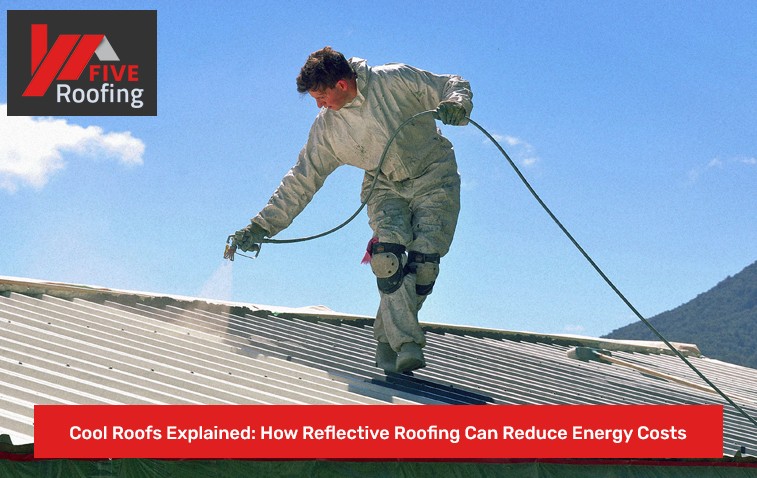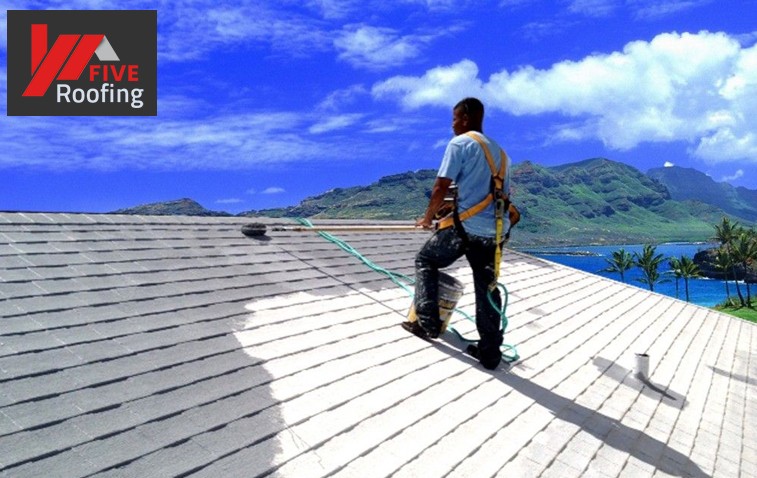As global temperatures continue to rise and energy consumption soars, finding innovative ways to reduce energy costs has become a priority for homeowners and businesses alike. One of the most effective solutions to this challenge is the installation of cool roofs, designed with reflective materials that can significantly lower the temperature of a building.
By reflecting more sunlight and absorbing less heat than standard roofs, cool roofs can help reduce the need for air conditioning, lower energy bills, and even extend the lifespan of the roof itself. Understanding the benefits and mechanisms of cool roofing can empower property owners to make informed decisions that contribute to energy efficiency, comfort, and environmental sustainability.

Cool roofs are specially designed roofing systems that reflect more sunlight and absorb less heat than traditional roofs. The concept behind cool roofs is simple yet powerful: by increasing the solar reflectance and thermal emittance of the roof, these systems help keep buildings cooler, particularly in hot climates.
Solar reflectance, also known as albedo, refers to the ability of a surface to reflect sunlight, including visible, infrared, and ultraviolet light. Traditional dark-colored roofing materials absorb a significant amount of sunlight, converting it into heat, which is then transferred into the building. Cool roofs, on the other hand, are made from materials with high solar reflectance, which helps bounce sunlight away from the roof surface, keeping it cooler.
Thermal emittance is the ability of a material to release absorbed heat. Even with high solar reflectance, some heat is inevitably absorbed by the roof. Cool roofing materials are also designed with high thermal emittance, meaning they can efficiently release the absorbed heat back into the atmosphere, further reducing the roof’s temperature.
One of the most significant benefits of cool roofs is their ability to reduce energy consumption and lower utility bills. By keeping buildings cooler, cool roofs can decrease the demand for air conditioning, leading to substantial energy savings.
During the summer months, the sun’s rays can cause traditional roofs to reach temperatures of 150°F or higher. This heat is transferred into the building, increasing indoor temperatures and forcing air conditioning systems to work harder to maintain a comfortable environment. Cool roofs, with their reflective properties, can reduce roof temperatures by up to 50°F, significantly decreasing the amount of heat entering the building. This reduction in heat gain can lower air conditioning costs by 10% to 30%, depending on the building’s design and location.
Cool roofs not only reduce overall energy consumption but also help lower peak energy demand during the hottest parts of the day. Peak energy demand refers to the times when electricity usage is at its highest, typically in the late afternoon and early evening during summer. By reducing the need for air conditioning, cool roofs can help alleviate stress on the power grid and reduce the likelihood of blackouts or the need for additional power generation.
Because cool roofs reduce the amount of heat entering a building, the HVAC system doesn’t have to work as hard to cool the interior. This reduced workload can extend the lifespan of the HVAC system, resulting in fewer repairs, less maintenance, and delayed replacement costs. Additionally, a less strained HVAC system operates more efficiently, further contributing to energy savings.
Beyond energy savings, cool roofs offer a range of environmental benefits that contribute to sustainability and climate change mitigation. By reducing energy consumption, cool roofs help decrease greenhouse gas emissions and improve overall environmental quality.
The urban heat island (UHI) effect is a phenomenon where urban areas experience higher temperatures than their rural surroundings due to human activities and the concentration of heat-absorbing materials like asphalt and concrete. Cool roofs can help mitigate the UHI effect by reflecting more sunlight and reducing the amount of heat that buildings contribute to the environment. This cooling effect can lead to lower outdoor temperatures, improved air quality, and a more comfortable urban environment.
Energy production, particularly from fossil fuels, is a major source of greenhouse gas emissions. By reducing the need for air conditioning, cool roofs help lower the demand for electricity, which in turn reduces the amount of carbon dioxide and other greenhouse gases released into the atmosphere. Over time, widespread adoption of cool roofing technology could significantly contribute to efforts to combat climate change.
Cool roofs can also have a positive impact on air quality by reducing the formation of ground-level ozone, a key component of smog. Ozone formation is temperature-dependent, with higher temperatures leading to increased ozone levels. By lowering ambient temperatures, cool roofs can help reduce the formation of ground-level ozone, leading to cleaner, healthier air in urban areas.
Cool roofs offer several advantages that can extend the lifespan of a building’s roof and enhance its durability. By reducing heat-related stress on roofing materials, cool roofs contribute to longer-lasting roofs with fewer maintenance needs.
Traditional roofs are subjected to significant temperature fluctuations throughout the day, especially in regions with hot climates. These fluctuations cause the roofing materials to expand and contract, leading to wear and tear over time. Cool roofs minimize these temperature swings by reflecting sunlight and releasing absorbed heat, reducing the stress on the roofing materials. This can prevent cracks, warping, and other forms of damage, extending the roof’s lifespan.
Ultraviolet (UV) radiation from the sun can degrade roofing materials, causing them to break down and lose their effectiveness. Cool roofs provide a protective barrier against UV radiation, helping to preserve the integrity of the roofing materials. This protection is particularly important for flat or low-slope roofs, which are more exposed to direct sunlight.
By reducing the wear and tear on roofing materials, cool roofs can lead to lower maintenance costs over the life of the roof. Fewer repairs and replacements mean less disruption for building occupants and lower overall expenses. Additionally, the extended lifespan of a cool roof means that property owners can delay the cost of a full roof replacement, providing long-term financial benefits.

While cool roofs are particularly beneficial in hot climates, they can offer advantages in a variety of environmental conditions. Understanding how cool roofs perform in different climates can help property owners make informed decisions.
In hot climates, cool roofs are highly effective at reducing indoor temperatures and lowering energy costs associated with air conditioning. Buildings in regions with long, hot summers can benefit the most from cool roofing technology, as the reduction in heat gain directly translates to lower cooling demands.
Even in moderate climates, where temperatures may not reach extreme highs, cool roofs can still provide energy savings during warmer months. In these regions, cool roofs can help reduce the need for air conditioning while maintaining a comfortable indoor environment.
In colder climates, the benefits of cool roofs may be less pronounced, as the reduction in heat gain during the winter months could lead to higher heating costs. However, for buildings with significant cooling demands during the summer, cool roofs can still offer net energy savings. Additionally, cool roofs in cold climates can help prevent the formation of ice dams, which occur when snow melts on a warm roof and refreezes at the eaves, causing water to back up under the shingles.
Cool roofs represent a powerful tool for reducing energy costs, improving building performance, and contributing to environmental sustainability. By reflecting more sunlight and absorbing less heat than traditional roofs, cool roofs help keep buildings cooler, reduce the need for air conditioning, and lower utility bills. In addition to their energy-saving benefits, cool roofs also offer environmental advantages, such as reducing the urban heat island effect, decreasing greenhouse gas emissions, and improving air quality. Whether in hot, moderate, or even cold climates, cool roofs can enhance the longevity of roofing materials, reduce maintenance costs, and provide long-term financial and environmental benefits. As awareness of the importance of energy efficiency continues to grow, cool roofs are likely to play an increasingly important role in building design and construction.
Cool roofs reduce energy costs by reflecting more sunlight and absorbing less heat, which lowers the temperature of the building. This reduces the need for air conditioning, leading to lower energy consumption and utility bills.
While cool roofs are most effective in hot climates, they can still provide benefits in colder climates by preventing ice dams and reducing cooling needs during warmer months. However, the energy savings may be less pronounced in regions with long, cold winters.
Cool roofs can be made from a variety of materials, including reflective coatings, cool shingles, and single-ply membranes like TPO and PVC. These materials are designed to reflect more sunlight and release absorbed heat more efficiently than traditional roofing materials.
Cool roofs contribute to environmental sustainability by reducing energy consumption, lowering greenhouse gas emissions, mitigating the urban heat island effect, and improving air quality. They play a crucial role in creating more sustainable and energy-efficient buildings.